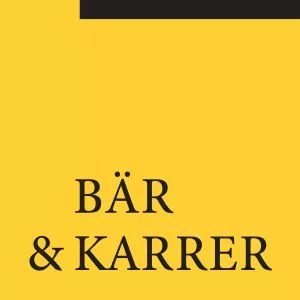Two recent judgments by the Swiss Federal Supreme Court concerned Danish resident banks that were denied refunds of Swiss withholding taxes on dividends derived from Swiss publicly traded shares on grounds of lacking beneficial ownership, even though the applicable former Denmark-Switzerland Income and Capital Tax Treaty (1973)1 did not explicitly mention such a requirement. The Supreme Court overruled the decisions of a lower court granting treaty benefits to the banks.
1. Introduction
In judgments rendered by the Swiss Federal Supreme Court on 5 May 2015,2 two Danish resident banks were denied refunds of Swiss withholding taxes suffered on dividends derived from Swiss publicly traded shares on grounds of lacking beneficial ownership, even though the former Denmark-Switzerland Income and Capital Tax Treaty (1973), which was applicable to the two cases, did not explicitly mention such a requirement. The Supreme Court overruled the Federal Administrative Court (FAC),3 which had previously found that, under the factual circumstances, tax treaty benefits had to be granted to the Danish banks.
In contrast to the FAC, the Supreme Court concluded that the claimant Danish banks had engaged in abusive "dividend stripping" schemes and were thus not to be regarded as the beneficial owners of the dividends in question. In both cases, the Danish banks had carried out so-called arbitrage trading or securities financing strategies with regard to the Swiss shares, involving hedging strategies based on equity derivatives. The Supreme Court not only rejected the pending withholding tax reclaims of the Danish banks, but also upheld the claims raised by the Swiss Federal Tax Administration (SFTA) for repayment of withholding taxes already refunded in the past.
2. The Swaps Case
2.1 Factual background
The claimant, a Danish bank, sold total return swaps on baskets of Swiss listed shares via a broker to other banks residing in five different third countries (short derivative position). Dividends would generally fall due on the underlying basket shares during the swap contract period. The Swiss tax treaties with the counterparties' home countries generally provided for a 15% non-refundable dividend withholding tax.
Under the terms of the swaps, the Danish bank made a notional payment to the counterparty on maturity, reflecting the performance of the share price and the entire dividend return, which were to be exchanged for a payment by the counterparty comprised of interest on the notional invested amount at the LIBOR rate, plus a margin and compensation for any negative performance of the share price over the contract period. The two payments were then netted against each other.
In order to cover (hedge) its financial exposure under the swaps, the Danish bank purchased an equivalent amount of the underlying Swiss shares in the market via a broker (equity long position). Upon maturity, the swaps would normally be cash settled and the Danish bank would sell the Swiss shares on the market, again via a specialized broker. The identities of the ultimate sellers and buyers of the Swiss shares were unknown. The arrangements typically lasted for approximately six months, generally with dividends falling due during the contract terms. As a shareholder of record, the Danish bank received the dividends net of the 35% applicable Swiss withholding tax and subsequently filed for a full refund of the Swiss tax withheld, relying on the terms of the then applicable Denmark-Switzerland income tax treaty.
In 2006, the Danish bank received refunds of initially deducted Swiss withholding taxes to the tune of CHF 37.9 million. The aggregate tax reclaims raised by the Danish bank for 2007 and 2008 of CHF 53.6 million were denied by the SFTA. In that context, the SFTA also demanded repayment of the already refunded taxes for 2006. The SFTA essentially took the position that the transactions had no business substance other than the objective to secure the full refund of the Swiss withholding taxes. According to the SFTA, the Danish bank had transferred the entire dividend benefits without any withholding tax burden to the swap counterparties, for which the bank received a merely nominal compensation in the form of a small profit margin. The combination of the swaps with the equity long positions served to transfer all risks and benefits pertaining to the shares and the dividends to the swap counterparties. The SFTA determined a causal nexus between the swaps and the temporary holding of the shares, as the acquisition of the shares would not have been required but for the entry into the swaps. In addition, the SFTA assumed that the shares had ultimately been acquired from the swap counterparties and sold back to those parties after the cash settlement of the swaps.
Considerations of the Federal Administrative Court4
Upon appeal by the Danish bank, the FAC essentially established that, under the given circumstances, the Danish bank held the beneficial ownership to the shares and the dividends. Thus, the Court held that it was not necessary to address the fundamental issue of whether beneficial ownership was a prerequisite for tax treaty benefits under the former applicable Swiss tax treaty with Denmark, which did not include any express "beneficial owner" language.5 Furthermore, the Court found that there was no issue of tax treaty abuse, as the Danish bank had business substance in Denmark. The FAC referred to the jurisprudence of the Supreme Court,6 according to which – in the absence of a specific anti-abuse provision in the tax treaty in question – abuse of a treaty will be assumed only when the corporate claimant of tax treaty benefits does not carry on any genuine, active business in the country of its tax residence; an eligible business activity generally requires the presence of personnel and physical premises and equipment in accordance with the nature of the activities.
The decision of the FAC in favour of the Danish bank was fundamentally based on its determination that the claimant held beneficial ownership and was not abusing the tax treaty. Focusing on the beneficial ownership analysis, the Court essentially referred to the Commentary on the OECD Model Convention (OECD Model) and various Swiss and international scholars, in particular, the Swiss dissertation by Baumgartner.7 The Court emphasized that the beneficial owner concept serves as a condition precedent for tax treaty benefits with regard to dividends, interest and royalties (similar to the residence requirement); it does not constitute an anti-abuse rule. The Court confirmed the general doctrine that the beneficial ownership concept examines the intensity of the relation between a taxpayer and a taxable object (income) from an economic perspective, thereby adopting a substance-over-form approach.
According to the FAC, the beneficial owner quality is essentially determined by the degree of the decision power and control of the income recipient over the application of the dividends received. The Court rejected the conclusion of the SFTA that the Danish bank was obliged under the swaps to fully transmit the dividend return to the swap counterparties. The Court held that the swap agreements did not stipulate any such obligation; the agreements rather required the swap seller to make a payment to the buyer reflecting the entire performance of the underlying shares, including any dividends, over the contract period. The Court further held that the swap agreements did not stipulate any legal obligation of the swap seller to hedge its payment obligations arising under the contracts, or to buy the underlying shares.
Moreover, the FAC examined whether there was any de facto obligation to transfer the dividends. For this test, the Court, applying the criteria developed by Baumgartner,8 questioned whether the transactions were "mutually dependent" on each other. On the one hand, it had to be tested whether the Danish bank's payment obligation under the swaps would also have persisted in the absence of the actual receipt of the original dividends. On the other hand, it had to be determined whether the Danish bank would have earned the dividends even in the absence of the swap obligations. The Court concluded that both questions had to be affirmed and that there was no mutual dependence. Finally, the Court rejected the argument of the SFTA that the Danish bank's beneficial owner quality had to be denied, as it retained only a very small fraction of the dividends for itself. For the Court, that sort of ex post analysis was not appropriate; the beneficial ownership must rather be determined at the time the income arises. The Court recognized that as a result of the swap arrangements, the swap counterparties had effectively assumed the economic risks with regard to the dividends; however, the Court emphasized that the decision to actually purchase the underlying shares and to hedge the swap obligations was at the full discretion of the Danish bank. A further contentious issue the FAC had to address – which was apparently at the heart of the entire case – was the extent of the Danish bank's procedural duty to cooperate with the SFTA in assessing the relevant facts. The SFTA generally assumed that the Danish bank
had purchased the shares from the swap counterparties and eventually sold the shares back to those parties, hinting at an abusive, bilateral and circular dividend-stripping scheme. To support that assumption, the SFTA pointed to the simultaneous entry into the swaps and purchase of the underlying shares, and the simultaneous dissolution of the swaps and sale of the underlying shares, whereby the positions were entered into shortly before the dividend dates and were held only for three to six months. Against that background, the SFTA had asked the Danish bank to disclose the identity of the ultimate swap counterparties. However, the Danish bank refused to do so, pointing to Danish banking laws prohibiting the disclosure of bank client names; instead the Danish bank provided a certificate issued by a Swiss notary, according to which the swap counterparties were resident in five different jurisdictions and were not identical with the buyers or sellers of the underlying shares.
The Court pointed to the legal doctrine according to which the cooperation duty of the claimant is limited by factors of necessity and sustainability. The Court emphasized that the Danish bank must not be expected to breach its customer confidentiality requirements and expose itself to criminal law sanctions. The Court deemed the notarial certificate to be sufficient proof of the Danish bank's assertion that the swap counterparties were not identical with the sellers and buyers of the underlying Swiss shares.
Decision of the Supreme Court9
The Supreme Court reversed the decision of the FAC and ruled wholly in favour of the SFTA. First, the Supreme Court confirmed its practice, according to which beneficial ownership is a general prerequisite for tax treaty benefits, even under older tax treaties which do not include any express beneficial owner language. However, the Court left open the question of the relation between the beneficial owner requirement and the reservation of tax treaty abuse. The Court confirmed the general analysis of the beneficial owner concept made by the FAC in that the beneficial owner capacity is to be measured by the degree of the taxpayer's decision power over the application of an item of income from an economic perspective (substance over form). In particular, the Supreme Court held that a person cannot be regarded as the beneficial owner, if, based on contractual or merely "factual obligations or similar restrictions" that already exist at the time of the payment or receipt of the income in question, it is bound to transfer the income to someone else. Basically, the Supreme Court applied the criteria developed by Baumgartner to assess whether a person is effectively under a "legal or merely factual obligation or similar restriction" to transfer the income in question. According to Baumgartner, two criteria must be cumulatively met, namely (i) the realization of the income must be dependent upon the obligation to transfer the income and (ii) the obligation to transfer the income must be dependent upon the actual receipt of the income.
The Supreme Court interpreted and applied these tests in light of the total return swaps of the Danish bank, covered (hedged) by the underlying shares, as follows: The first dependency concerns the question as to whether the Danish bank was obliged to hedge its swap obligations by purchasing the underlying Swiss shares. The second dependency relates to the question as to whether the Danish bank was obliged to transfer the dividends arising on the purchased shares to the swap counterparties.
With regard to the first test, the Supreme Court held that, although the Danish bank was neither legally nor factually obliged to hedge its swap positions through the purchase of the underlying shares, it had, in fact, a number of "compelling reasons" to completely hedge all of its total return swap positions without any exceptions and simultaneously with the existence of the positions. "The same coincidence existed in each case with regard to the dissolution of the swaps and the resales of the shares."10 The Supreme Court held that, because the Danish bank had undertaken to pass on the entire performance of the underlying shares, including the entire dividend, to the swap counterparties, it had to safeguard its own interests through the purchase of the relevant underlying shares, thus enabling it to effectively meet its payment obligations under the swaps using the dividends collected. The Supreme Court found that the interest earned under the swaps effectively enabled the Danish bank to debt-finance the purchase of the underlying shares. The Court thus found an apparent interdependence between the acquisition and the financing of the underlying shares.
Moreover, the Supreme Court saw a nexus between the fact that the swap arrangements effectively transferred the entire economic exposure to the underlying shares, including the share price development and the risk and benefit of the dividends, to the swap counterparties (while the Danish bank was fully hedged against those risks and benefits) and the small net profit margin earned by the Danish bank. The Court found that, in the absence of such a full hedge of the risks, the swaps could not have been entered into with comparable terms. In essence, the Supreme Court concluded that the swaps and the long stock positions were mutually dependent on each other.
With regard to the second test, the Supreme Court conceded that the swaps as such did not require the Danish bank to transfer the (original) dividends on the underlying shares to the swap counterparty, but only to make economically equivalent payments. However, the Court determined an apparent economic nexus between the different cash flows in question (i.e. the receipt of the original dividends including the refund of the withholding tax on the long share positions and the payments made under the swaps). Further, the Court pointed to the fact that the payments to be made under the swaps exactly matched the actual performance (whether positive or negative) of the underlying shares as a matter of concrete legal agreements. This led the Supreme Court to conclude that the Danish bank had "compelling reasons" to actually hedge itself by acquiring the underlying shares and receiving the dividends pertaining thereto.
Overall, the Supreme Court concluded that the Danish bank was under a de facto obligation to pass on the entire dividend benefits to the swap counterparties, in direct analogy to the "stepping-stone" theory:
The nexus between the dividend collection and the contractual obligation to pass on the dividends must be assumed [...] The shares were systematically purchased prior to the dividend maturity and for the purpose of passing-on the collected dividends fully and free of any withholding tax to the swap counterparties, which were neither Swiss nor Danish resident [...] and such passing on to non-resident parties had been planned well before the dividend maturity [...] All those counterparties had their domiciles in states whose the tax treaties provided only for a residual withholding tax burden of 15%.11
To read the full article click here.
Footnotes
1 SR 0-672.931.41.
2 CH: Federal Supreme Court decisions 2C_364 and 377/2012 and 2C_895/2012.
3 CH: FAC rulings A-6537/2010 (7 Mar. 2012) and A-1246/2011 (23 July 2012). 4 FAC ruling A-6537/2010 (7 Mar. 2012).
5 Considerations 3.3.2, 3.4 and 6.
6 Supreme Court decision 2A_239/2005 (28 Nov. 2005), consideration 3.6.3.
7 B. Baumgartner, Das Konzept des beneficial owner im internationalen Steuerrecht der Schweiz (Schulthess Verlag 2010).
8 Baumgartner, supra n. 7. 9. Decision 2C_364 and 377/2012 (5 May 2015).
10. Consideration 6.3.1.
11. Consideration 6.4.2.
The content of this article is intended to provide a general guide to the subject matter. Specialist advice should be sought about your specific circumstances.


